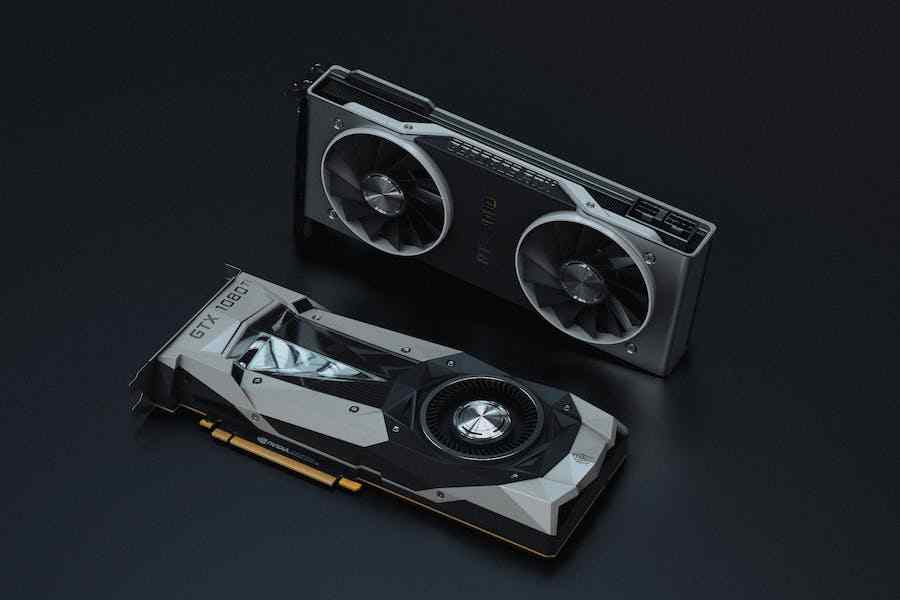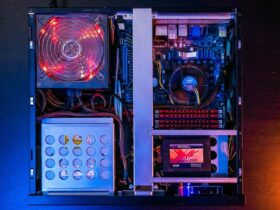MSI Afterburner is a powerful and popular GPU overclocking utility that allows users to push their graphics cards to the limit, squeezing out every ounce of performance. GPU overclocking has become an essential tool for gamers, content creators, and enthusiasts looking to enhance their computer’s capabilities. However, one common question is whether MSI Afterburner can be used with any GPU. In this comprehensive guide, we will explore the compatibility of MSI Afterburner with various GPUs, delve into the system requirements, and provide insights into overcoming compatibility issues. Whether you have an older GPU or the latest powerhouse, this article will help determine if MSI Afterburner is the right tool for your overclocking needs.
Does MSI Afterburner Work With Any GPU?
Yes, MSI Afterburner is compatible with a wide range of GPUs. It supports NVIDIA and AMD graphics cards, making it a versatile choice for GPU overclocking and monitoring. However, it’s important to note that while MSI Afterburner works with most GPUs, there may be occasional compatibility issues with extremely old or obscure models. To ensure compatibility, always check the official MSI Afterburner website or user forums for the latest information and updates.
The Importance Of GPU Overclocking
GPU overclocking is a practice that involves pushing a graphics processing unit (GPU) beyond its stock clock speeds and performance limits. While it may not be necessary for all users, GPU overclocking holds significant importance for several reasons:
One of the primary reasons users overclock their GPUs is to achieve better gaming performance. Overclocking can lead to higher frame rates and smoother gameplay, making it particularly appealing to gamers seeking the best possible experience.
GPU overclocking is beneficial for tasks that require substantial graphical processing power, such as video editing, 3D rendering, and scientific simulations. Overclocked GPUs can significantly reduce rendering times and increase productivity for professionals in these fields.
In some cases, overclocking can enable a GPU to handle higher graphics settings in games or applications. This improves visual quality, including higher resolutions, more detailed textures, and advanced graphical effects.
As software and games become more demanding over time, an overclocked GPU can extend the useful life of your hardware. Instead of upgrading to a new GPU, overclocking can allow you to continue enjoying acceptable performance with your current hardware.
Overclocking can provide a cost-effective alternative to purchasing a more powerful GPU. By extracting additional performance from your existing hardware, you can delay the need for an expensive GPU upgrade.
Overclocking allows users to fine-tune their GPUs to their specific needs. You can create custom overclocking profiles for different applications, optimizing your GPU’s performance for gaming, content creation, or other tasks.
Overclocking is essential for benchmarking enthusiasts and hardware testers. It allows them to assess a GPU’s full potential and compare it to other hardware configurations, helping to provide valuable performance data.
Overclocking can be an educational journey for enthusiasts who want to gain a deeper understanding of their hardware. It involves experimenting with settings, learning about thermal dynamics, and troubleshooting, all of which can enhance technical knowledge.
Explanation Of MSI Afterburner
MSI Afterburner is a trendy and powerful graphics card overclocking utility developed by MSI (Micro-Star International). Its primary purpose is to allow users to customize and optimize the performance of their GPUs (Graphics Processing Units), whether they are gaming enthusiasts, content creators, or professionals in need of extra graphical horsepower. Here’s an explanation of some critical aspects of MSI Afterburner:
Overclocking: MSI Afterburner enables users to overclock their GPUs, pushing the graphics card beyond its stock specifications to achieve higher clock speeds and increased performance. Overclocking can result in smoother gaming experiences and faster rendering times for content creation.
Voltage Control: The utility allows users to adjust the GPU’s voltage, which can further enhance overclocking potential. However, this should be done cautiously, as it can damage the hardware if not done correctly.
Fan Control: MSI Afterburner controls GPU fan speed, allowing users to set fan curves or profiles to manage temperatures effectively manually. This helps keep the GPU cool during intensive tasks.
Monitoring: It offers a comprehensive suite of monitoring tools that display real-time information about the GPU’s performance, including temperature, usage, clock speeds, and more. This data is crucial for assessing the impact of overclocking and ensuring the GPU’s stability.
On-Screen Display (OSD): The utility can overlay real-time monitoring data directly onto your games or applications, giving users an easy way to monitor their GPU’s performance without leaving their fullscreen programs.
Custom Profiles: Users can create and save custom overclocking profiles for applications or scenarios. This allows easy switching between settings optimized for gaming, video editing, or other tasks.
Compatibility: MSI Afterburner is designed to work with a wide range of GPUs, including those from NVIDIA and AMD. It also supports various graphics card brands, not just MSI, making it a versatile choice for GPU tuning.
User-Friendly Interface: Despite its powerful capabilities, MSI Afterburner offers an intuitive and user-friendly interface, making it accessible to beginners and experienced overclockers.
The Compatibility Of MSI Afterburner
The compatibility of MSI Afterburner is a crucial aspect to consider when using this GPU overclocking and monitoring tool. Here’s a breakdown of the critical factors that determine its compatibility:
Supported GPU Manufacturers:
MSI Afterburner is compatible with graphics cards from significant GPU manufacturers, NVIDIA and AMD. This broad compatibility ensures that users with GPUs from these manufacturers can use the utility to optimize their graphics card performance.
Age and Model of GPU:
MSI Afterburner is designed to work with a wide range of GPU models, including older and newer ones. However, it’s essential to check for updates and compatibility information on MSI’s official website or forums, as support can vary depending on the specific GPU model and series.
Operating System Compatibility:
MSI Afterburner is primarily developed for Windows-based systems. It is compatible with various versions of the Windows operating system, including Windows 7, Windows 8, and Windows 10. Compatibility with future Windows versions may require updates or patches, so it’s essential to stay up to date.
Custom PCB Designs and Non-reference Cards:
While MSI Afterburner generally works with reference graphics cards, compatibility may vary for custom PCB (Printed Circuit Board) designs and non-reference cards from different manufacturers. These cards might have unique features or restrictions that affect their compatibility with MSI Afterburner.
Firmware and BIOS Considerations:
Some GPUs have firmware or BIOS restrictions that can impact their compatibility with overclocking utilities like MSI Afterburner. In some cases, GPUs with locked firmware may not allow extensive overclocking, or modifications may be required to unlock these capabilities.
Benefits Of Using MSI Afterburner
MSI Afterburner can offer many benefits, especially for users looking to optimize their GPU’s performance, monitor its health, and tailor its settings to specific needs. Here are the key benefits of using MSI Afterburner:
- One of the primary benefits of MSI Afterburner is the ability to overclock your GPU. Overclocking allows you to increase the GPU’s clock speeds and memory frequencies, resulting in higher gaming performance and faster rendering for tasks like video editing and 3D rendering.
- MSI Afterburner controls your GPU’s cooling system. You can adjust fan speed curves and profiles to balance performance and temperature. This helps keep your GPU running at an optimal temperature, reducing the risk of overheating and thermal throttling.
- For advanced users, MSI Afterburner allows for voltage adjustments, which can further enhance overclocking potential. However, it’s essential to exercise caution when changing voltage, as it can impact stability and potentially void warranties.
- The utility offers real-time monitoring of critical GPU statistics, including temperature, usage, clock speeds, and memory usage. It also provides benchmarking tools to assess the impact of overclocking and compare your GPU’s performance to others.
- Users can create custom fan profiles to suit different scenarios. For example, you can have a silent profile for everyday tasks and a performance-oriented profile for gaming or resource-intensive applications.
Bottom Line
GPU overclocking with tools like MSI Afterburner can offer significant benefits, such as improved gaming performance, enhanced graphics rendering, and cost savings. It allows users to tailor their GPU’s performance to specific needs, extend hardware lifespan, and gain valuable technical knowledge. However, it’s essential to approach overclocking cautiously, as it can void warranties, increase heat generation, and pose potential risks to hardware stability. Responsible overclocking practices, proper cooling solutions, and a thorough understanding of your GPU are crucial to unlocking its full potential while minimizing potential drawbacks.
FAQ’s
Is GPU overclocking safe?
When done responsibly and with proper cooling, GPU overclocking is generally safe. However, risks are involved, such as increased heat and potential hardware damage if not done correctly.
What is MSI Afterburner, and how does it work?
MSI Afterburner is a GPU overclocking and monitoring utility that allows users to adjust GPU settings, monitor performance, and customize fan profiles. It modifies clock speeds, voltages, and fan speeds to optimize GPU performance.
What is thermal throttling, and how does overclocking affect it?
Thermal throttling occurs when a GPU reduces its clock speeds to prevent overheating. Overclocking can increase heat generation, potentially leading to thermal throttling if adequate cooling is not in place.























Leave a Reply